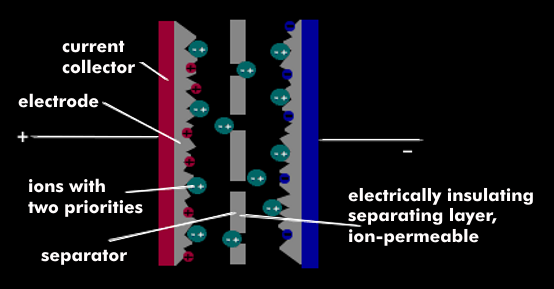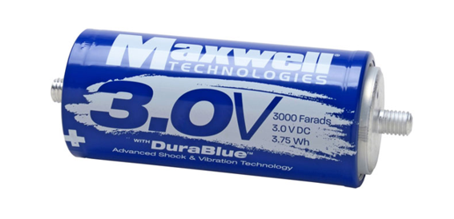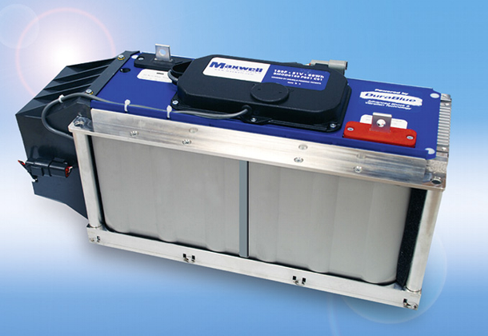super capacitor (supercap)
Supercapacitors or ultracapacitors, also known as supercaps or ultracaps, are capacitors characterized by an extremely high capacitance of up to several thousand farads. They can be double layer capac itors(DSK) or lithium ion capacitors( LiC). Supercapacitors are located between classical capacitors and rechargeable batteries and can be used as energy storage devices.
In general, the capacitance of capacitors is determined from the quotient of the area of the electrodes (A) to the distance (d) between them and the dielectric constant(DK): (`C = DK * A/d`). This is optimized in double layer capacitors by inserting an organic electrolyte and a separator between the two carbon electrodes.
The separator is an insulator, but it is permeable to ions. The ions have two polarities and can therefore migrate to both electrodes. There they form a very thin dielectric, which causes the high energy density of double layer capacitors. This is about 5 Wh/kg to 30 Wh/kg and thus about one tenth of the energy density of rechargeable batteries. The power density, on the other hand, is high and can be between `10^3` W/kg and `10^6` W/kg. In addition, supercapacitors can easily withstand a million charging cycles.
Characteristic values of supercapacitors
The capacity of supercapacitors is far higher than that of electrolytic capacitors. Unlike rechargeable batteries, they are pulse-loadable and can store and release energy in a very short time. The charging and discharging times are between 1 s and 30 s. In comparison, they are about 3 to 5 minutes for lithium-ion batteries and between 10 minutes and 3 hours for other batteries. Supercapacitors exist with capacitance values ranging from a few farads (F) to several tens of thousands of farads. The cell voltage of supercapacitors is typically 2.7 V, max. 3.0 V, the equivalent series resistance( ESR) in the milliohm range is between 40 mOhm and 300 mOhm, and the number of charge cycles can be as high as 1 million. The latter is a significant advantage over rechargeable batteries.
The advantage of supercapacitors is that they can absorb power peaks in the grid and provide extremely high power densities within a few seconds. These components are used in automotive technology in hybrid electric vehicles and fuel cell electric vehicles, in starter modules for diesel equipment, in wind turbines, UPS systems, handhelds, cell phones and other mobile devices.



